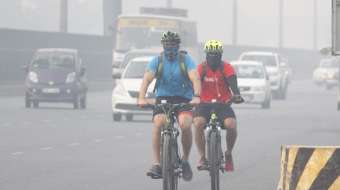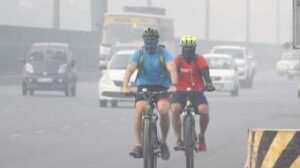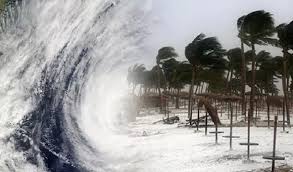The report, published by Climate Trends, a Delhi-based organisation working on issues climate change and clean energy, compiles similar information for 14 cities in India which were ranked on the World Health Organisation’s list of the world’s most polluted cities last year. Gurugram came in at number 11 on this list.
The report also compiles statements made by state-level politicians on the issue of air pollution between 2014 and 2018, including chief minister Manohar Lal Khattar and Union minister Rao?Inderjit Singh.
Santosh Harish, a fellow at the Centre for Policy Research in Delhi, said, “The ?report is interesting as it collates various statements made by politicians on the matter of air pollution, which is how seriously they view the issue.?In the effort to mainstream environmental issues ahead of the polls, this is valuable.”
Harish pointed out that statements made by Khattar and Rao Inderjit Singh, reveal that the problem is often viewed through the lens of transportation. The Delhi-Alwar RRTS corridor, the KMP and KBG expressways, expansion of Metro services and the Gurugaman bus service, for example, have all been touted as solutions to the city’s air pollution problem. Experts said this is with good reason.
According to a Centre for Science and Environment analysis from 2014, the density of cars in Gurugram is higher than it is in Delhi, with 323 cars per 1,000 people as opposed to 88 cars per 1,000 people in Delhi. Moreover, the analysis estimated that over 1.3 lakh cars come to the city each day from the capital.
The Climate Trends report quotes Khattar as saying, in 2018, “The KMP and KGP (Kundli-Ghaziabad-Palwal) roads will benefit Gurugram, Faridabad and Delhi. Our CNG-based city bus service will start soon. That will cut vehicular pollution. Once the Dwarka Expressway is in use, concentration of vehicles will spread out. Pollution happens when the vehicles are not moving.”
Union minister Rao Inderjit Singh, speaking at the Urban Mobility India (UMI) Conference in 2016, stressed on the need to promote non-motorised transport like footpaths, walkways and cycle ways. “Delhi (smog) should be taken as a serious warning to the future of urban India and all concerned should wake up in time so as not to meet the same fate,” he said.
In 2016, at a meeting of the National Capital Region Planning Board (NCPRB), NCR states were also asked to speed up 14 interstate connectivity links for seamless travel in the region as means to cut pollution level, while at a national level, organizations, such as NITI Aayog, have also stressed on the need for clean mobility to improve air quality in the region.
However, according to city-based air pollution scientist Sachin Panwar, “This is a very elitist view of the problem, and negates very basic issues such as mismanagement of waste, road dust, construction debris, biomass burning and reliance of people on diesel gensets.These cannot be solved by large infrastructure projects. They need political will.”
Guneet Singh, who runs a city-based non-profit working in the field of air pollution, also said, “It is a bit simplistic to push better transport (as a means to check air pollution).It takes many years to implement measures like Metro corridors and bus services; bigger roads only worsen traffic congestion in the long run.”
While some experts also criticized the Climate Trends report for not making substantive statements on the effectiveness of pollution control policies, Arti Khosla, director of Climate Trends, said, “I think that is evident from the fact that, over the last four years, air quality in the region has steadily deteriorated.”
This has been indicated in multiple studies, including the recent Air Quality Life Index.
City-based activists believe that no tangible results have been felt on ground in response to the aforementioned steps. “The HSPCB, for example, has not issued a single penalty for dust pollution since April 2018. Moreover, waste burning, construction activities which violate rules, and road dust are visibly prevalent in the city, which should not be the case if the policies were being implemented effectively,” said Vaishali Rana Chandra, a city-based activist.
Officials in the HSPCB (Haryana State Pollution Control Board), Gurugram Metropolitan Development…




